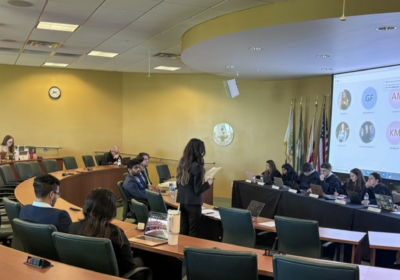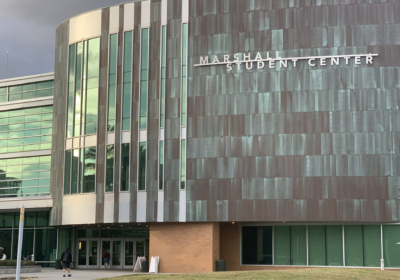Contemporary Art Museum’s new exhibit shares generational stories of poverty

Featured artist and photojournalist Nina Berman presented her exhibit in the Contemporary Art Museum (CAM) with emotionally charged photographs of the Black students who suffered abuse in the hands of Florida’s own Arthur G. Dozier School for Boys.
Berman’s exhibit “The Dozier Boys” features images of the boys viewing the school after its closure. Inspiration for this project was found while Berman was working on a past project called “Modern-day Slavery, Forced Labor and Human Trafficking.” Berman, who visited the site after it was closed in 2011, found the survivors’ stories to be a prime example of modern-day slavery in the U.S.
“They were returned to the site of their original trauma and abuse at the hand of the state. To kind of trigger memories and assess what happened to them. Trying to find some accountability and closure,” Berman said.
As Martin Luther King’s “Poor People Campaign” seeked to address the issue of housing and poverty reaching 55 years, the CAM Poor People Art exhibit, which debuted on Friday, aims to unite generations of poverty in the country through photographs, reimagined protest signs, graphic designs and interactive pieces.
In addition to King’s work, exhibition curator Christian Viveros-Faune intended to increase the visibility of recurring issues, such as poverty and racism, using the guiding principles of reverend and social activist William Barber II’s “Poor People Campaign: A National Call for a Moral Revival,” according to the exhibition’s press release.
Exhibit artists Berman, Rico Gatson and Jason Lazarus participated in a panel discussion conducted by Viveros-Faune on Thursday, one day before the gallery opening. Gatson said his choice of using graphic design while portraying Black and Brown people in his “Icons” pieces was intentional to capture their energy as American heroes.
“To take these individuals who are significant artistically, culturally, Black, Brown and African Americans and celebrate their energy or their legacy,” Gatson said. “That was originally thinking about superheroes.”
Artist and faculty member Jason Lazarus, who was responsible for the exhibition’s walk-in tent-like piece, said he researched the impact and historical significance of the wooden tents constructed in the “Resurrection City” movement after MLK’s assassination through photographs.

Lazarus said that interactive pieces filled with magazines and books are essential to experience “feel-like” art, where the public could experience the same feelings the artists had.
“I mean, you walk in and it surrounds you,” Lazarus said. “And when I saw the pictures [of the shelters]…you get the sense of the investment.”
Once the floor was opened for questions, exhibit collaborator and artist Miguel Luciano asked the panel what bringing privileged art to privileged people would actually do for poverty. While Viveros-Faune claimed to believe that accessibility and exposure to political content will be beneficial to students, Lazarus said he felt sympathetic to Luciano’s feelings and acknowledged he is always learning.
“It’s the idea of being a student,” Lazarus said, “I think we are all students ourselves up here, we are continually grappling with these things, often in public and the results of those can be a little cringe.”
During the Poor People Art exhibit, Luciano conducted a walk-through of the gallery. Starting with late artists Hiram Maristany and Jill Freedman, Luciano focused on the importance of young people to the movement of reform in poverty, such as the Puerto Rican Liberation Organization of the “Young Lords”.
“It’s not a well-known history, because it’s not a popular history in textbooks,” Luciano said, “It is not a part of mainstream education, but its living history among generations that are still with us.”
When questioned about the significance of a politically-charged exhibition like Poor People Art being shown on a college campus, Miguel Luciano claimed that access to untold stories can help students question systemic oppression and why these stories have been hidden.
“If these are not familiar histories that are being exposed and unpacked in the exhibition, and they should be, then it’s an opportunity for students to ask why,” Luciano said. “For students to question their teachers, their institutions and their departments.”






